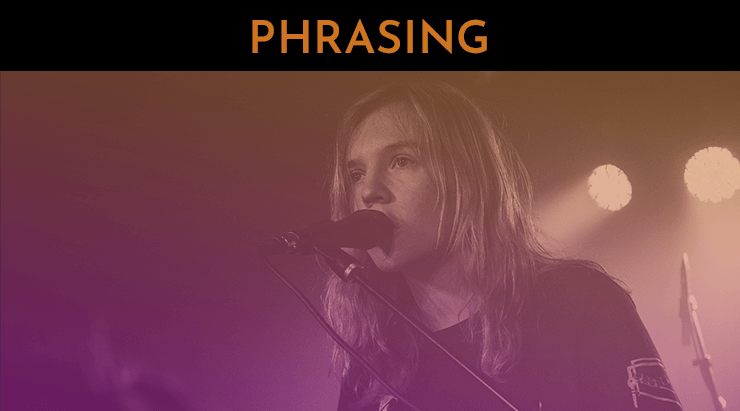Phrasing - What is it?
August 12, 2019By Camille van Niekerk
Phrasing is how we divide a song into musical ideas, including where we breathe and where we place emphasis. For an example, sing through “Happy Birthday”. You probably sang 4 phrases: (1) Happy birthday to you, (2) happy birthday to you, (3) happy birthday dear Grandma, (4) happy birthday to you. That’s easy, natural phrasing!
How is phrasing indicated?
In lots of notated music (sheet music), you’ll see phrase markings and breath marks that indicate musical phrases. A phrase marking is an elongated, curved line above or below a set of notes. If you see a phrase marking, that means you should not take a breath when singing the notes within that phrase; you can, however, breathe before or after the phrase. A breath mark looks like an apostrophe, and you are encouraged to breathe wherever you see one. This is especially important in choral and group a capella music to ensure that the group’s phrasing and breathing are unified.
How is phrasing determined?
Effective phrasing is determined by both the text and the melodic line. In other words, musical phrases are defined in such a way that makes grammatical sense with the text and enhances or supports the melody. Good composers are aware of this and either provide phrase markings or write in such a way that makes it obvious where the phrases should be. Sometimes conductors and individual singers make phrasing choices according to their own interpretation of the music, especially if there are few phrase markings to follow.
Does this apply to pop and contemporary music?
Yes - although you might not run into phrase markings, since most people learn pop music by ear, rather than reading sheet music. In pop music, phrases tend to be short and conversational, and they’re generally less of a concern than in more classical styles and musical theater. However, skillful and intentional phrasing in contemporary styles can really take a performance to the next level! You’ll sound more natural, more expressive, and will help your audience understand the meaning of the song.
How can I improve my phrasing?
1. Make phrase & breath marks according to the text
The first element of good phrasing is breath: more specifically, breathing in places that make sense with regard to both the music and the text. So the first step is to mark your phrases as if you’re reading the words to a poem or monologue. Print out the lyrics of a song you’re working on and read the lyrics aloud as if you’re reading poetry: natural, but expressive. Take note of where you naturally pause (between thoughts, at periods or commas), and draw a little apostrophe or check mark at that point on your lyrics sheet.
Once you’ve marked your phrases and are ready to sing, connect the notes within each phrase. Depending on the style, this could mean smooth, legato singing or simply creating a continuous line of energy and not interrupting a phrase with breath.
2. Determine dynamics
There’s more to phrasing than just connecting the notes within a phrase. Dynamics help us to give a phrase shape, just as our spoken sentences have a natural rise and fall. I had a choir conductor in college who loved to say: “either you’re growing or you’re going”. He meant that in any given phrase, you’re either getting louder (growing) or getting softer (going). In some phrases, you’re doing both, and that’s what we call “messa di voce”.
So step 2 is to analyze the lyrics & make some dynamic choices. Ask yourself: How do I interpret these lyrics? What do they mean to me? What feelings do the words evoke in me, and how can I invoke that feeling in my audience? Where does it make sense to increase or decrease volume?
3. Stylize
Last, your stylistic choices will determine your phrasing. By stylist choice, I mean any departure from the original melody. As you look over your lyrics, ask yourself: Where is it appropriate to add some embellishment (like a run or fall)? Is there a word I find particularly important to highlight? Are there specific lyrics I should add a little more weight to, or a note to sustain for longer?
Another element of style to consider is called back phrasing, which is when we purposefully sing ahead of or behind the beat. Back phrasing is heavily used in jazz and more contemporary styles.
Final thoughts
Remember that our ultimate goal for phrasing is to sing in a way that is natural, expressive, and helps communicate the song’s meaning to our listeners.



